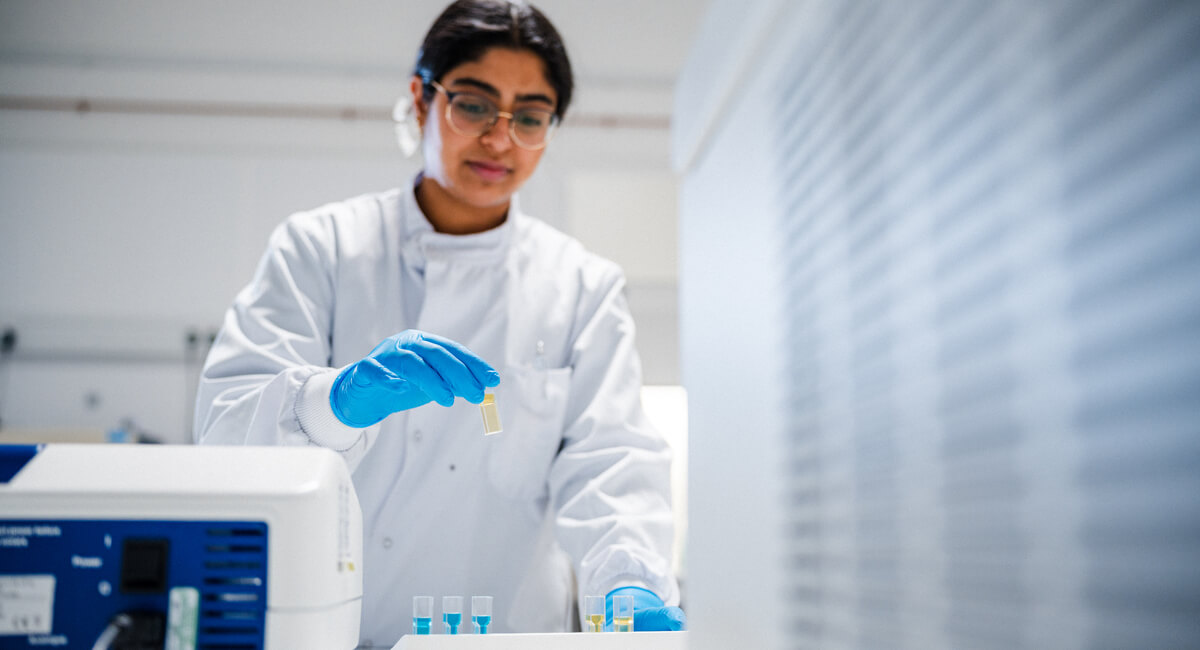Extractables & Leachables Testing: Everything You Need to Know
Article Summary
In the medical device industry, patient safety and regulatory compliance are non-negotiable. One critical step in ensuring both is understanding which chemical substances may be released from a device during storage, handling, or clinical use. This is where Extractables and Leachables (E&L) testing comes in — a process governed by ISO 10993-18, the international standard for the chemical characterisation of medical device materials. In this article, we break down the essentials of E&L testing, why it matters, and how it helps manufacturers demonstrate biocompatibility and safety.Article Contents
Extractables & Leachables (E&L) Testing
In the medical device industry, patient safety and regulatory compliance are paramount. One crucial aspect of ensuring both is understanding what chemical substances may be released from a device during its lifecycle — whether in storage, transport, or during actual use. This is where Extractables and Leachables (E&L) testing comes into play.
As part of ISO 10993-18 — the international standard for chemical characterisation of medical device materials — E&L testing plays a central role in the biological evaluation of medical devices. It helps manufacturers identify potential risks, ensure product safety, and meet global regulatory requirements.
Let’s break it down.

What is Chemical Characterisation?
Chemical characterisation involves identifying and quantifying the chemical constituents of a material. For medical devices, it’s essential to understand what chemicals are present in the materials used — from base polymers to additives, coatings, and even residues from manufacturing processes.
Why? Because these substances may interact with the body or the environment in ways that pose a risk to patients. Chemical characterisation also supports a device’s overall biological evaluation, helping identify the release of harmful substances under both normal and simulated use conditions.
Key Analytical Techniques Used
Depending on the target compounds and their properties (volatile, semi-volatile, non-volatile), different analytical methods are used. Some examples of popular analytical methods include:
- Gas Chromatography-Mass Spectrometry (GC-MS): Ideal for detecting semi-volatile organic substances. This method separates complex mixtures and identifies compounds by their mass-to-charge ratio.
- High Performance Liquid Chromatography-Mass Spectrometry (HPLC-MS): Used for non-volatile organic substances, combining separation with precise identification.
- Inductively Coupled Plasma Mass Spectrometry (ICP-MS): Highly sensitive method for detecting trace metals and inorganic substances, such as heavy metals.
ISO 10993-18: The Standard Behind E&L Testing
ISO 10993-18 is part of the broader ISO 10993 series for the biological evaluation of medical devices. It provides the framework for conducting a comprehensive chemical analysis of medical device materials, laying out a multi-step process:
1. Material and Composition Assessment
This first step involves gathering detailed information about the device — its materials, additives, coatings, and processing aids (such as mold-release agents or sterilisation chemicals). Clinical use, duration of contact, and patient population are also taken into account.
This information may be sourced from material suppliers, literature, or previous data on similar devices with established biological equivalence.
2. Extractables and Leachables (E&L) Testing
This is the heart of the chemical characterisation process. It involves:
- Extractables: Chemical compounds that can be extracted from the device under exaggerated laboratory conditions.
- Leachables: Compounds that are released from the device under actual conditions of clinical use.
These tests simulate real-world exposure scenarios to identify potentially harmful substances that may be introduced into the body.
3. Analysis of Extracts
The next step is to analyse the extract solutions using techniques like GC-MS, HPLC-MS, or ICP-MS. This quantitative data helps determine if any substances present could pose a toxicological risk.
4. Toxicological Risk Assessment
The final step is evaluating the toxicological relevance of the identified chemicals. This involves comparing measured levels to established safety thresholds to determine if there’s any potential risk to patients.

Thresholds and Safety Limits
One critical concept in E&L testing is the Analytical Evaluation Threshold (AET) — the minimum concentration at which a compound needs to be reported for toxicological assessment. It is calculated using the following formula:
AET = (DBT × A / B × C) / UF
Where:
- A = Number of devices extracted
- B = Volume of extract
- C = Clinical exposure to the device
- DBT = Dose-Based Threshold (e.g. the threshold of toxicological concern)
- UF = Uncertainty Factor based on analytical limitations
This ensures that only compounds present above a certain level are evaluated for toxicity, helping focus efforts where risk is highest.
Why E&L Testing Matters
Chemical characterisation and E&L testing are essential tools for:
- Regulatory compliance: Required by Notified Bodies and preferred by the FDA
- Biocompatibility assessment: Contributes to ISO 10993-1 evaluations and ISO 10993-17 toxicological risk assessments
- Risk mitigation: Identifies issues early in development, reducing the risk of late-stage regulatory rejection
- Product safety and trust: Demonstrates a commitment to the highest standards of quality and patient safety
Final Thoughts
With ISO 10993-18 as the backbone, manufacturers can systematically evaluate material safety, minimise patient risk, and accelerate their path to market with confidence. We support our clients through the entire E&L testing process — from study design to toxicological assessment — ensuring that chemical risks are well understood and fully managed.
If you’re developing a medical device and need guidance on E&L testing, we’re here to help.
Get It Done, With Certainty.
Contact us about your testing requirements, we aim to respond the same day.
Get resources & industry updates direct to your inbox
We’ll email you 1-2 times a week at the maximum and never share your information


